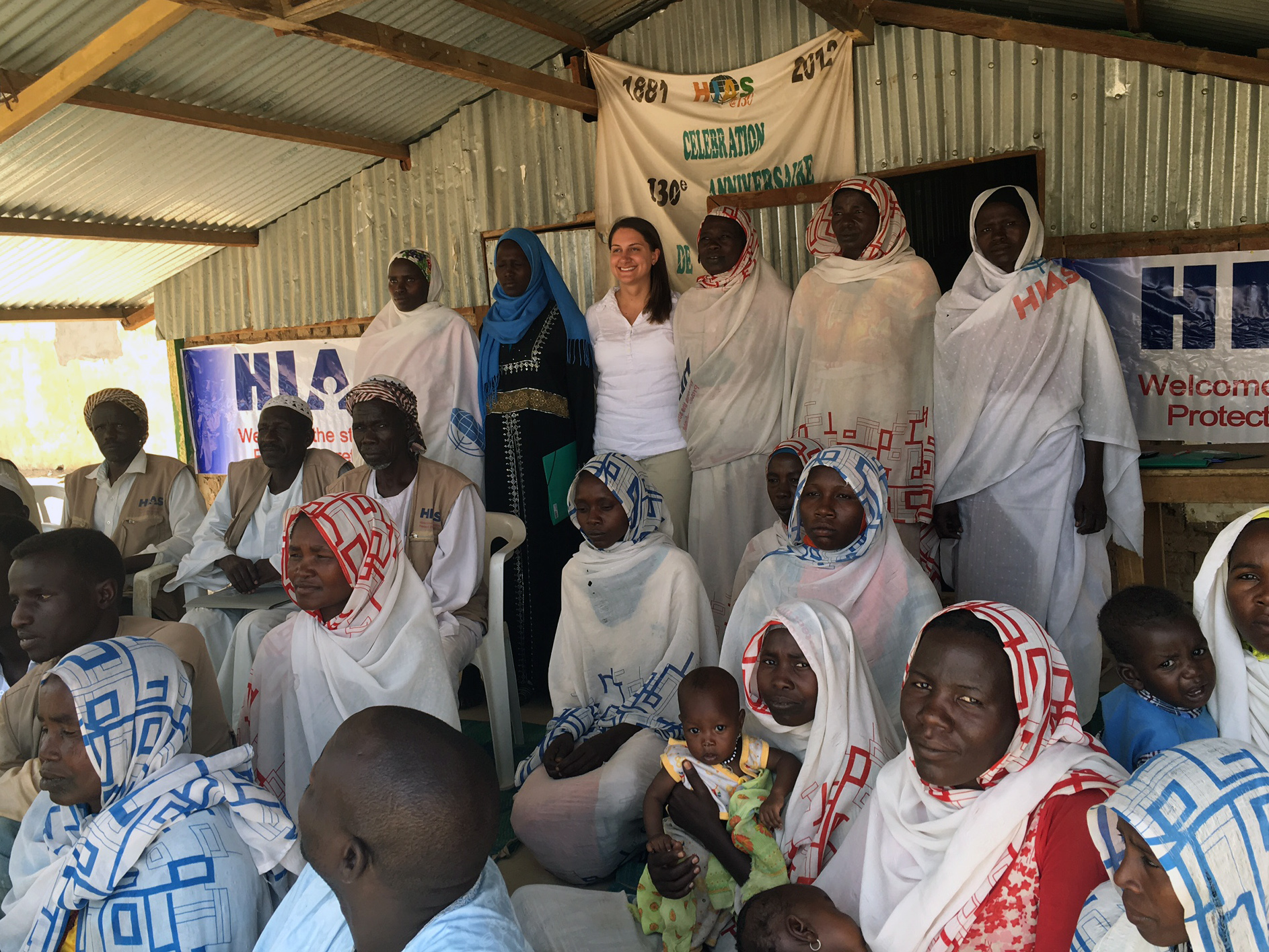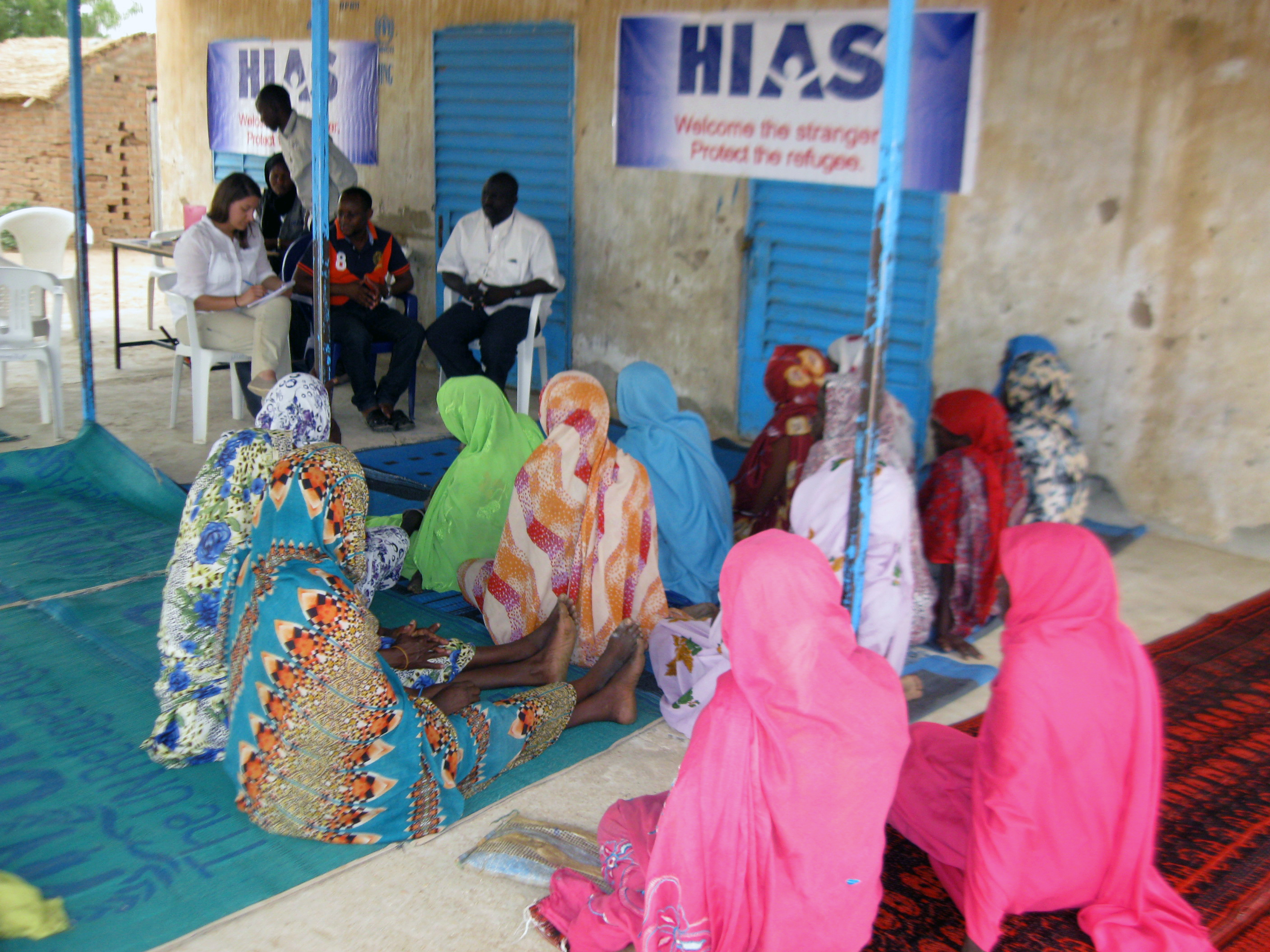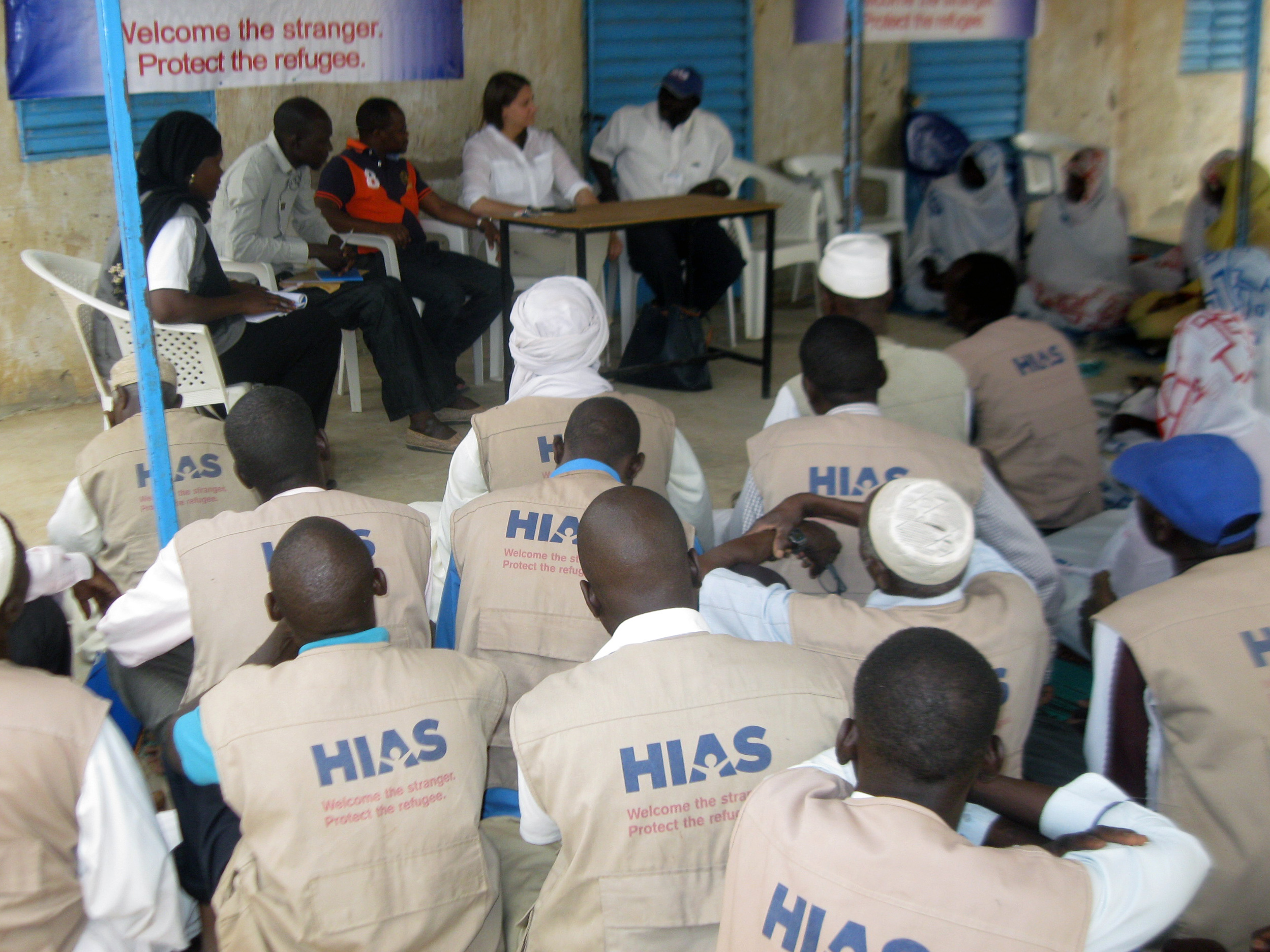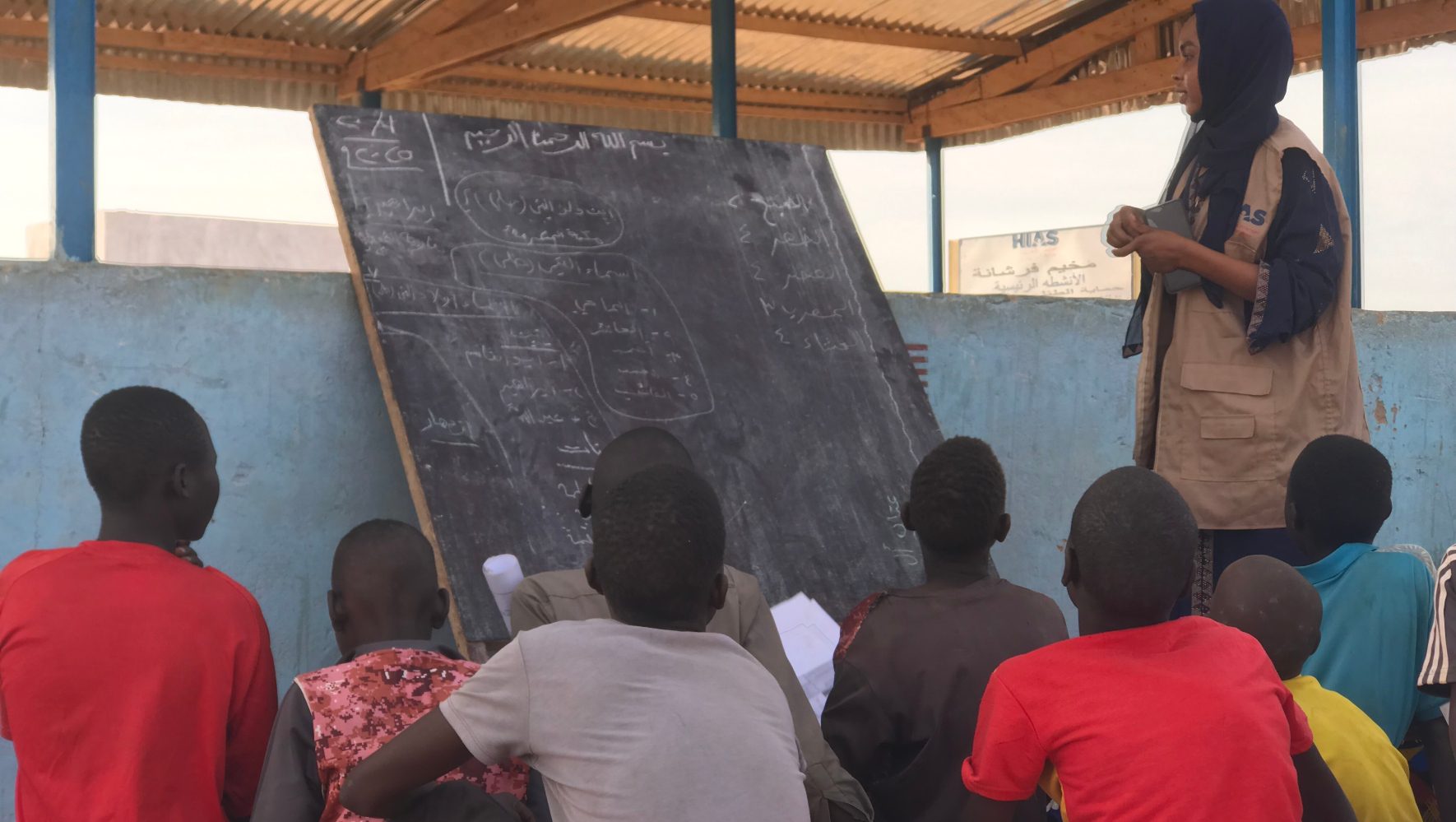Sudanese Refugees Making a Difference in Chad
By Rachel Nusbaum, HIAS.org
Jul 28, 2016
HIAS works in 11 camps in eastern Chad, serving Sudanese refugees who have been living there for over a decade after fleeing conflict and genocide in Darfur. Members of the refugee community serve as community mobilizers for HIAS, working with and in service of their fellow refugees. Local Chadian staff members supervise HIAS community service activities, which include preventing and responding to incidents of sexual and gender-based violence, or SGBV.
HIAS.org interviewed global programs staffer Bethany Orlikowski, who recently returned from site visits in Chad.
Q: What did you see in Chad that might surprise someone who has never been inside a refugee camp before?
A: People have an image of refugees as passive, but the vast majority of our direct programming in the camps in Chad is actually done by refugees themselves. When I visited our operations in Chad, I was able to meet with some of our mobilizers, who truly are the backbone of our work in the camps there.
Q: Who are the community mobilizers and what do they do?
A: Currently, more than 360 refugees are employed as community mobilizers in Chad, and they act as HIAS’ representatives to tens of thousands of refugees. Potential mobilizers are identified by community leaders from their neighborhoods, and then interviewed by HIAS staff. After they are hired, they are given specialized training in one of five service areas: psychosocial assistance, social services, SGBV prevention, peace education or educational theater.
Those trained in theater, for example, perform drama shows to educate the community about SGBV, child marriage and other social issues. Mobilizers engaged in peace education activities work both within the camps, motivating the refugee community and helping them deal with their lives in the camp environment, as well as with the surrounding Chadian villages, educating them on the situation that Darfuri refugees face and helping work towards a more peaceful coexistence between the two groups.
One or more community mobilizers are responsible for each residential block, and many conduct door-to-door sensitization on issues like SGBV, domestic violence prevention and child protection. Mobilizers can also identify refugees who are in need of assistance, referring them to HIAS or other NGOs that provide services in the camps. Mobilizers often assist elderly or disabled refugees, collecting food and non-food items (such as soap, floor mats and jerry cans for carrying water) for them and bringing them back to their homes.
Mobilizers also lead therapeutic activities and in some cases provide skills training to other refugees.
Q: How important is the work of these community mobilizers?
A: The mobilizers have a really incredible impact on their communities. They provide a wide range of support and do wonderfully effective outreach. They conduct door-to-door education, perform drama shows with educational messages, and act as resources for survivors of SGBV. They also staff our community centers – providing safe spaces for women and children – and lead trainings and skills-building exercises for other refugees.
These community mobilizers serve as HIAS’ eyes and ears on the ground, since staff are not in the camps in the evening or on weekends. Although new mobilizers are recruited every year, a significant number have been with HIAS Chad since our operations began in 2005 – a testament to their commitment to helping improve camp life.
Because they’re present in the camp 24/7 and trusted by the community, mobilizers are also called on in cases of domestic violence or sexual assault. They can provide basic counselling and, if necessary, escort survivors to health centers for medical attention. It’s a position of great responsibility.
Q: What do the community leaders think of their role? It’s rather unique to be both a refugee and a refugee assistance worker, isn’t it?
A: When I asked our mobilizers what their position meant to them, they all answered with pride that they want to be seen as community leaders – and being a HIAS mobilizer enables them to do so. Many of HIAS’ mobilizers have also been elected as chiefs of their blocks, a prestigious honor, and the female president of the Bredjing camp is also a HIAS community mobilizer.
So much of what I saw in these refugee camps was artificial – buildings that don’t belong in the middle of a desert, and people who don’t belong in the camps. By empowering refugees to become agents of change in their own communities, HIAS is helping to restore their dignity and self-sufficiency, qualities that have been taken away by the camp environment.
To learn more about HIAS’ work in Chad, click here.






